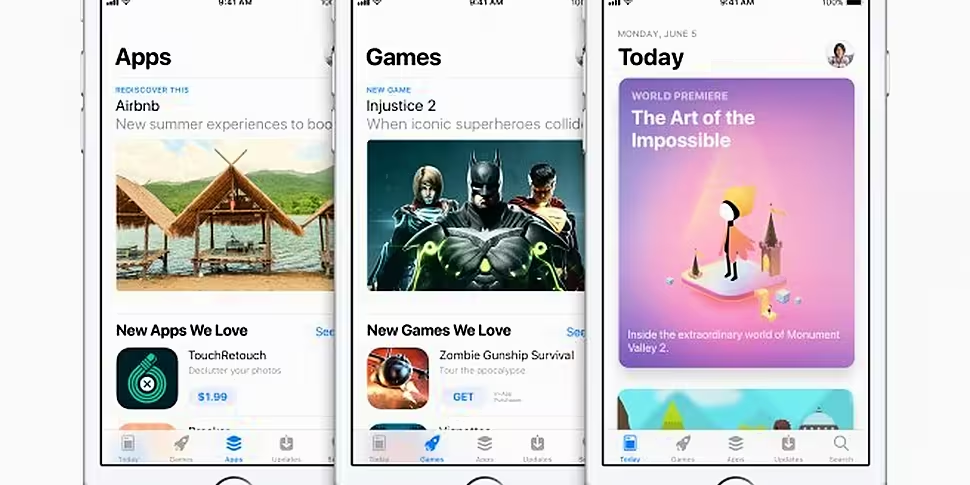Ten years ago this week the iPhone went on sale for the first time. Given the milestone, we have seen a lot of reminiscing about a single product which it is fair to say has had more impact on the world that anything since the emergence of the personal computer at the beginning of the 1980s — and arguably since the first cars rolled off the production line a century ago.
By the time the phone launched, public anticipation had reached fever pitch, given that Steve Jobs had first unveiled the iPhone six months previously. The device was seen as magical and even jaded tech journalists knew that this was something different, something apart, which would change the way people communicated and computed forever.
“It's certainly the most beautiful & most radical smartphone or handheld computer I've ever tested.” ~@waltmossberghttps://t.co/XzOIfYjDV2
— Nati Shochat 🤷ðŸ¼â™‚ï¸ (@natisho) June 29, 2017
Looking back now, the original iPhone was a pretty limited device. It didn’t have an app store, it was limited to one phone carrier and it only worked on the painfully slow Edge mobile network. But that didn’t matter. The iPhone was all about the future and the potential was there for everyone to see.
Advertisement
But, rather than looking back at how the iPhone sparked a smartphone revolution that has dramatically altered the way the world connects with each other, helping giving billions of people a voice and access they may otherwise never have had, let’s look at where the iPhone will be in another decade.
The first 10 years was arguably easy, given that innovation was much easier to come by, as phones got faster, thinner, smarter year-on-year. But as the slowdown in smartphone sales — especially in developed markets — shows us, those innovations are now becoming incremental and we have reached a point where the major changes are happening in software not hardware. For a company like Apple, which relies so heavily on iPhone sales to generate profits (it accounts for about 70 percent of their revenue), this is a worry.
Indeed, given the way technology is becoming ubiquitous in all areas and aspects of our lives, looking forward another decade, it is fair to ask whether or not the iPhone — and smartphones in general — will even be a major factor in our lives in 2027.
Think about it
You wake up in the morning to an alarm from your bedroom’s smart speaker. It gives you a heads-up about what your day looks like. As you plant your feet on your bedroom floor, your smart home kicks into gear, switching on lights, heating the water and turning on your coffee machine.
As you eat your breakfast, your smart television feeds you news updates based on your preferences, with Facebook updates, tweets and other social media updates coming through as they happen.
In this scenario, where everything we own is directly connected to the internet, there is no need for a smartphone. With ubiquitous connectivity thanks to 5G and internet from space, voice calling over the internet rather than traditional networks has become the norm, meaning you can make a call or send a message from any device, not just a phone.
Add to this the fact that cars will become mobile offices once you take away the need to actually drive them, and it is easy to see how smartphones will play a smaller and smaller role in our lives.
But, that’s not how the experts see it.
“No single new product in the market today will exert a comparable influence over the industry over the next ten years, even though we’ll see some fascinating new user interfaces, product categories, and changes in the way we all use technology and interact with each other and the world around us,” Jan Dawson, chief analyst with Jackdaw Research says of the smartphone.
Devices like augmented reality smart glasses, Amazon Echo style smart speakers and wearables of all types will have a bigger and bigger influence on our lives, as the technology behind them gets smaller and smarter and battery life improves. But, the smartphone will remain at the heart of all these devices, a constant in our lives, bringing everything together.
Most of those in the industry believe that the basic form factor we have become so used to — the rectangular slab of glass and aluminium — is here to stay. Smartphone brands and component manufacturers are investing billions in research and development in the belief that there is still a lot of life in the smartphone — none more so than Apple.
Ten years form now...
So what will the iPhone look like at 20? It will be incredibly fast — both in terms of how fast it open apps and how fast it takes to download them. It will have a camera that will blow your mind. It will likely be reduced to a single pane of glass (companies can already embed circuitry in glass today). And it will be the centre of how you connect to the world around you.
“It's your personal internet bubble,” says Andy Rubin, one of the architects of Android and who is now looking to challenge Apple with his new company Essential. “The smartphone brings connectivity within one foot of you, 24 hours a day seven days a week.”
And, despite the incredibly competitive nature of the smartphone market today and the commoditization of the smartphone market, Dawson says Apple’s “influence is still being felt” and will continue to do so in the future. Samsung has always sold more smartphones than Apple and yet the iPhone maker has captured the vast majority of profits and “an outsized share of the total revenues in the market, and had some of the highest customer satisfaction ratings. I don’t see any of that changing much,” Dawson adds.
The iPhone, it seems, is here to stay.









